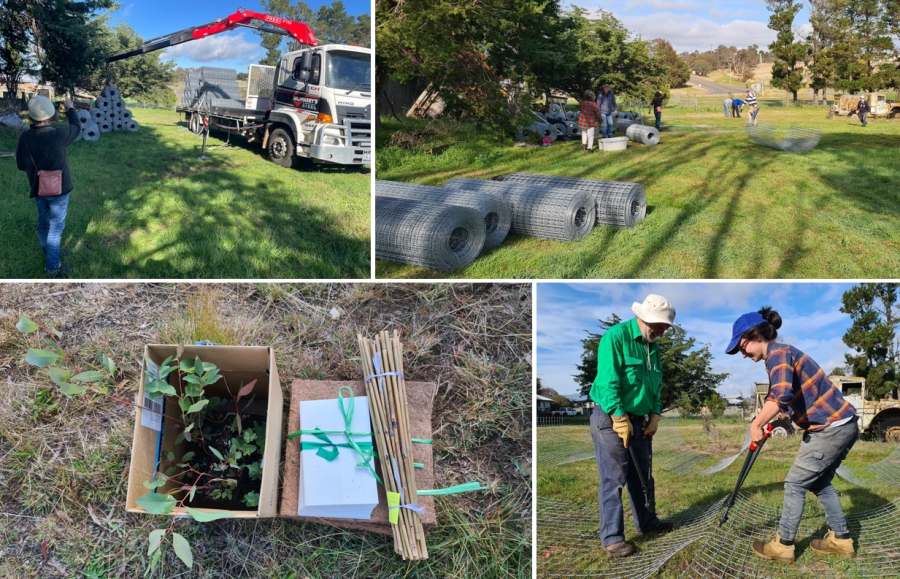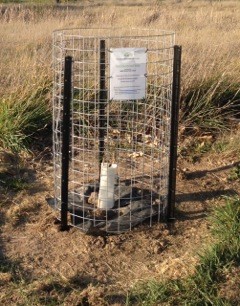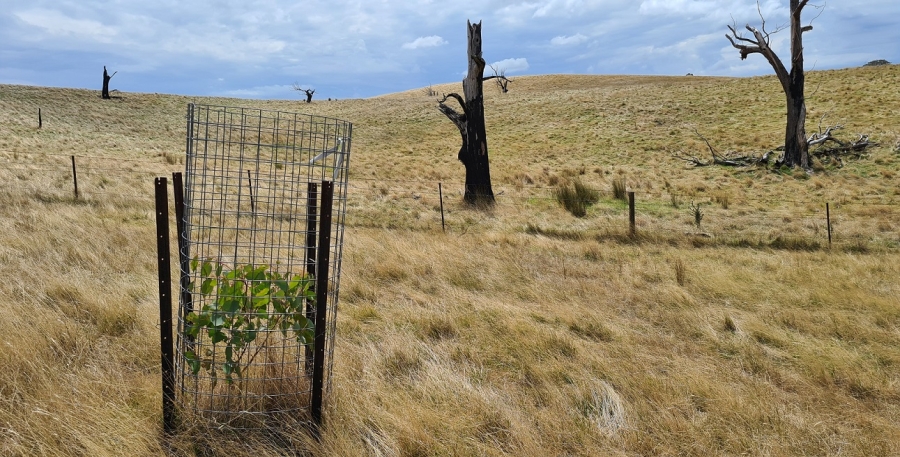For inquiries, please get in touch: This email address is being protected from spambots. You need JavaScript enabled to view it.; 0488 027 653.

Benefits of scattered paddock trees
Check out the excellent resources on this topic offered by ANU Sustainable Farms.
Benefits for wildlife
Scattered paddock trees provide an important function for our wildlife including:
- Habitat hollows for many birds, mammals, such as micro bats, reptiles, frogs, insects and spiders;
- A stepping stone for animal movement between patches of native vegetation;
- Important fauna food sources like nectar, foliage and insects;
- Increasing species’ resilience to the changing climate.
About one third of agricultural land in the Australian temperate zone contains scattered paddock trees. Most of these trees are very old and there are often insufficient young trees growing to take their place. Even dead and unhealthy scattered paddock trees are important as they provide homes and shelter for wildlife. The big concern is that in 40 years all of these paddock trees could be gone.

Benefits for your farm
Connected, resilient environments lead to healthy and productive farms. Planting native trees and protecting natural areas and waterways can provide numerous production benefits, including: providing shade for stock, sheltering stock and soil from strong winds, improving water quality and encouraging native pollinators and species that provide natural insect control. Scattered paddock trees provide a range of benefits for productivity including:
- Pest control. Bats and birds that roost in trees can significantly reduce the number of insect pests;
- Stock and crops thrive better with shelter. Trees give protection from the wind and extreme temperatures;
- Salinity management. Trees can reduce waterlogging and dryland salinity problems;
- Improved soil structure. Wind and water erosion is reduced with remnant vegetation;
- Better quality soil. Soil fertility improves as leaf litter and animal droppings break down, bringing nutrients to pastures from deep soil beyond the reach of the pasture root zone;
- Natural regeneration. Mature trees provide the seeds to grow young trees and create the right conditions to grow native grasses and shrubs;
- Bee products. Valuable for apiary, honey, bees wax and pollination, although feral bees can exclude native fauna from tree hollows.
This project was supported by South East Local Land Services through funding provided by the NSW Government as well as the Biala Wind Farm Community Grant.


